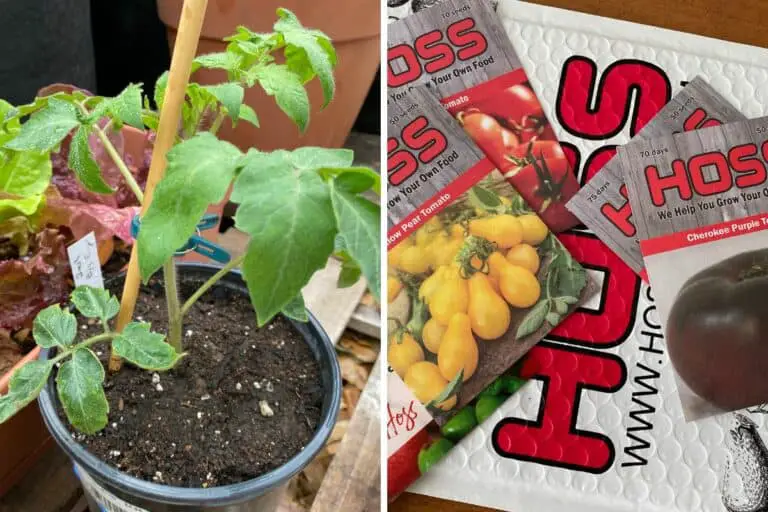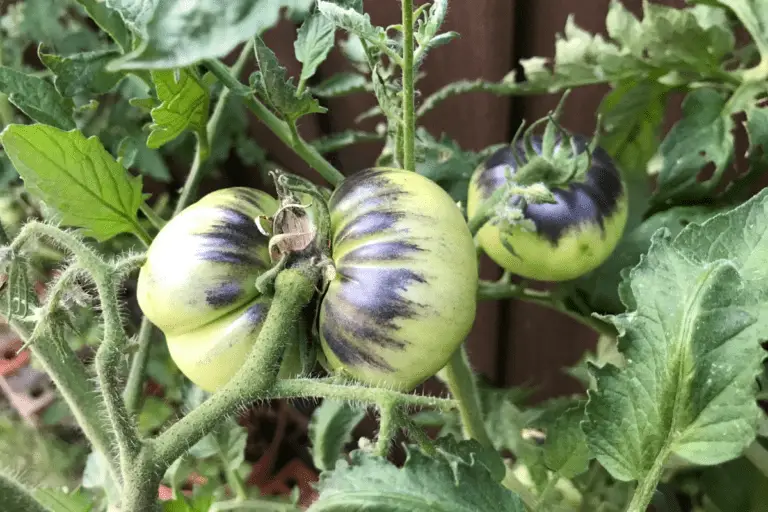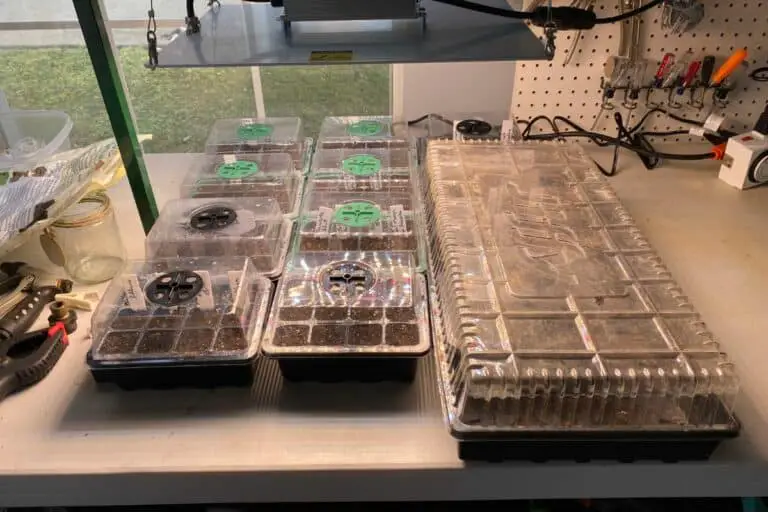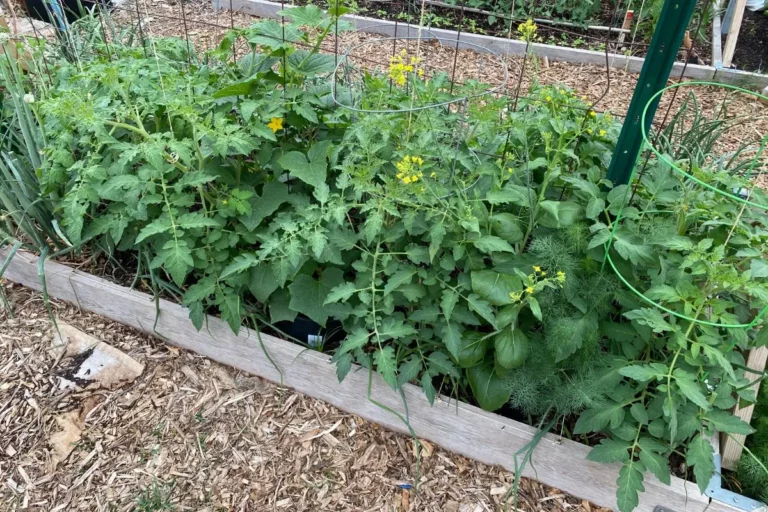Can You Plant Whole Tomatoes? What to Know Before You Try
Have you ever wondered if you could just take a whole tomato and plant it in the ground instead of scooping out the seeds and planting them individually.
Would this actually work, or would the tomato simply rot beneath the soil?
Planting whole tomatoes will produce new tomato plants, which is how tomatoes have naturally propagated themselves for thousands of years. However, doing so is an inefficient way to grow new plants since the seeds will be unevenly distributed within just a few square inches of soil.
If you’ve ever thought about planting whole tomatoes, you’re not alone. I have too.
So let’s take a look at the ins and outs of putting whole tomatoes in the ground so that you can decide if that’s something you’d like to try or not.
But a quick heads up to those of you who want to follow my recommendations below.
Planting Whole Tomatoes: A Step-by-Step Guide
Even though planting whole tomatoes is an ineffective way to propagate tomato plants, there are certain occasions when it might make sense to do so.
Before I walk you through my step-by-step approach to planting whole tomatoes, let me explain why you might consider doing so in the first place.
The simplest way to do this is to consider the goals of a tomato plant from the tomato plant’s perspective. I know this might sound kind of funny, but bear with me, and you’ll see what I mean.
Put simply, tomato plants don’t grow in order to provide you with delicious tasting tomatoes. The primary goal of every tomato plant is to produce as much fruit as possible so that the fruit (with all of its seeds) will make it into the soil, thus allowing the tomato plant to reproduce itself and thereby spread its genetic material to a new generation of tomato plants.
In other words, tomato plants (if left alone and undisturbed) will plant whole tomatoes each year to propagate themselves. Whether the tomatoes rot on the branch and fall off or whether entire limbs bend over due to the weight of the branches and fruit, making it possible for whole tomatoes to come into contact with the soil. This increases the odds that at least a few seeds each season will manage to overwinter in the soil and produce new healthy tomato plants the following year.

But as gardeners, we intervene constantly in this process. We use tomato cages and metal posts and panels to keep young tomato plants supported, we use trellises and trellis clips to provide additional support for new growth, and we harvest the fruit for ourselves instead of letting the plant drop its tomatoes to the ground.
What this demonstrates is that planting whole tomatoes is a surefire, albeit clumsy and sometimes wasteful, way to grow new tomato plants.
But if you’re going to plant whole tomatoes, please read my step-by-step instructions below because there are some things you’ll need to keep in mind before doing so.
Step 1: Select a Less-Than-Ideal Tomato
As gardeners, our goal is clearly to grow nice, healthy plants that will produce as much delicious produce as possible.
If you’ve spent months cultivating and caring for your tomato plants, you shouldn’t take perfectly decent tomatoes from the plant and bury them in the soil to rot.
But there are times when it makes perfect sense to do so–when you discover that a tomato has already rotted, is in the process of rotting, or has split so badly that it’s unsalvageable.
Of course, you can choose to pull those tomatoes off the plant and toss them in the compost bin, which I do each year, but if you’ve got an open space in your garden and you’re willing to experiment, you’ve got an opportunity to let nature do its thing…with some help from you, of course!
This happened to me recently. We had some soaring temperatures here in North Texas, and I left town for a few days. One of my neighbors agreed to water my plants, but despite the watering, I found a few severely cracked ones when I returned from my trip.
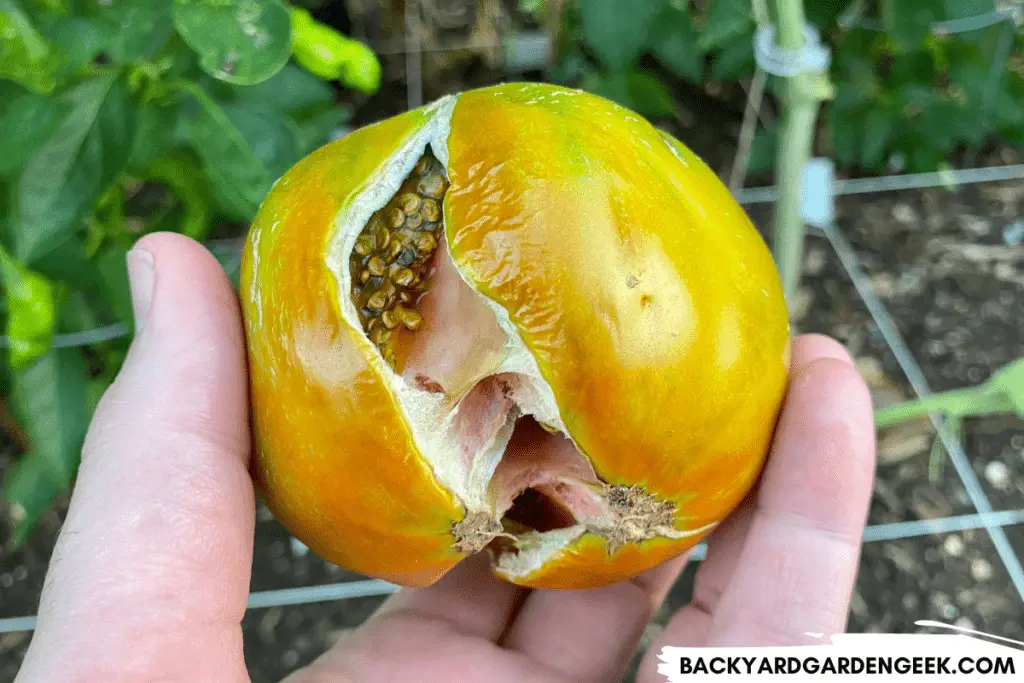
When I pulled this one off the plant, I saw ants crawling all around it plus a couple squash bugs (that I quickly did away with!). In addition to that, the cracking was so extensive that the fruit had cracked open all the way from the bottom to the top.
I have no problem harvesting ugly, cracked tomatoes, cutting off the bad parts, and eating the rest, but this tomato was too far gone, so there was nothing here to salvage. I also had a few half-rotten cherry-sized tomatoes that couldn’t be eaten and thus were also not worth saving, so I planted them as well.
Step 2: Dig a Properly Sized Hole
Here’s what I did next: Instead of walking over to the compost pile and tossing them in, I simply dug several small holes (for the cherry-sized tomatoes) and one large hole (for the larger tomato).
There’s no rocket science involved. You’re just trying to do what tomato plants naturally do when left to their own devices.
To germinate and grow properly, the tomato seeds need to come into contact with the soil, then have enough water so that the outer shell (called the testa) softens enough so that the first root (known as the radicle) can emerge from the seed and seek out nutrients in the soil.
I’ve written about germinating seeds in water, so check out that article if you’d like to learn more and see some close-up photos.
When tomatoes rot atop the soil, seeds will often find their way into the soil itself. Digging a hole simply speeds up this process.
Step 3: Slice or Crush the Tomato
Can you plant a whole tomato in the ground and grow a new tomato plant? Absolutely, as I’ve noted above.
But if you’re going to do so, I’d recommend either slicing or crushing the tomato a bit first. Here’s why.
If you plant a whole, intact tomato, it’s going to take some time for the skin and flesh to decompose before the seeds finally come into contact with soil.

If you plant a tomato that’s cut open or crushed a bit–or even one that’s already rotting or cracking (like the one in the photo above)–you’ll speed up the decomposition process and make it easier for the seeds to come into contact with the soil.
You don’t need to slice the tomato like you would at home, nor do you need to crush it until you’ve got a slimy mess on your hands. Simply cut the tomato in a few places with a utility knife and give it a gentle squeeze to soften it up and loosen its fleshy insides.
Just be sure to wear gloves or have a hose nearby because you’ll likely be a bit messy after doing so.

Step 4: Cover with Soil and Water Regularly
This might seem obvious, but if you’ve recently placed an entire tomato in the ground, you’ll need to cover it with 1/2 inch (12mm) of soil if you’re hoping to grow a new tomato plant.
If this is just a fun experiment, you can probably water whenever you feel like doing so. But if you’re wanting to grow something from a whole tomato (either this season or next), you’ll need to water that area of your garden like you’d water any other area of your garden.
The nice thing is that you don’t need all of those seeds to germinate. At most, you only need 1 or 2 new plants in that part of your garden since you can easily rehome a small seedling if more than 1 new plant pops up this year or next.
Can You Plant Half a Tomato?
The recommendations I’ve provided above beg the next obvious question: If you can plant whole tomatoes, can you cut tomatoes in half and plant those halves?
Much like whole tomatoes, tomato halves can be planted directly in the soil. This isn’t the best way to grow new tomato plants–and it’ll result in many wasted tomato seeds–but as the tomato halves start to rot, a few of their seeds will likely germinate once they come into contact with the soil.
Planting tomato halves is kind of like jumping ahead to Step 3 in the list above.
Cutting a tomato in half won’t do anything special to increase your odds of growing new tomato plants, but it’ll allow the soil to reach the seeds much sooner than if you simply planted a whole tomato.
As I noted above, please don’t take a perfectly good tomato, cut it in half, and bury the halves. That’s a waste of a good tomato.

Instead, find a tomato that’s truly unsalvageable, one that you wouldn’t want to eat anyway.
Simply slice that tomato in half and plant both halves in the garden. You wouldn’t have eaten the tomato anyway, so what do you have to lose?
Can You Grow Tomatoes from Tomato Slices?
Now that we’ve covered whole and half tomatoes, let’s talk about tomato slices.
Can you plant these as well?
Unlike whole tomatoes and tomato halves, tomato slices require prep work prior to planting, but they also increase the odds that seeds will germinate and grow new plants. Planting tomato slices, instead of the entire fruit, distributes the seeds underneath the soil so that newly-germinated seeds have a greater chance to develop healthy root systems.
If you’re interested in planting tomato slices, follow these steps to get the most out of your slices and seeds:
- When selecting tomatoes to slice up and bury, choose ones that you would have composted anyway, tomatoes that are partially rotten, halfway eaten, or otherwise unsalvageable. That way, even if these tomato slices don’t grow any new plants, you’ve lost nothing but the time it took to slice them and put them in the ground.
- Use a tomato slicing knife so that you can cut nice slices that are no thicker than 1/4 inch (6mm). You don’t need to buy something expensive. I’ve use this Rada serrated tomato slicing knife every time I cut tomatoes. I’ve been using it since 2013, and it’s still in perfect condition!
- Pick an area in your garden, preferably a square foot, and brush away the top 1/2 inch (12mm) of soil.
- Within that area, place the tomato slices side-by-side, if at all possible. It’s better not to stack them on top of each other because you’ll slightly decrease the odds of successful termination by doing so.
- Cover your tomato slices with 1/2 inch (12mm) of soil, maybe a tad bit more. I think you need to cover them with 1/2 to 3/4 inches (12-19mm) of soil so that the tomatoes are buried shallow enough to germinate and grow seedlings but deep enough so that a critter can’t easily spot them and dig them up.
Don’t bury them more than 3/4 inch (19mm) below the soil since that’ll decrease the chances that the seeds will germinate and grow successfully.
Once you’ve buried your slices, just keep them watered and wait to see what happens!
At best, you’ll see some tomato seedlings pop up in 2 weeks or so. At worst, you won’t see a tomato seedling pop up until next season…or possibly not at all.
But even if worse comes to worst, you haven’t lost anything more than a gross, unsalvageable tomato and a few minutes of your time.
More About Tomatoes
I’ve been growing tomato plants for 10+ years. If you’d like to read more about my experiences growing them and keeping them healthy, check out these related articles:


